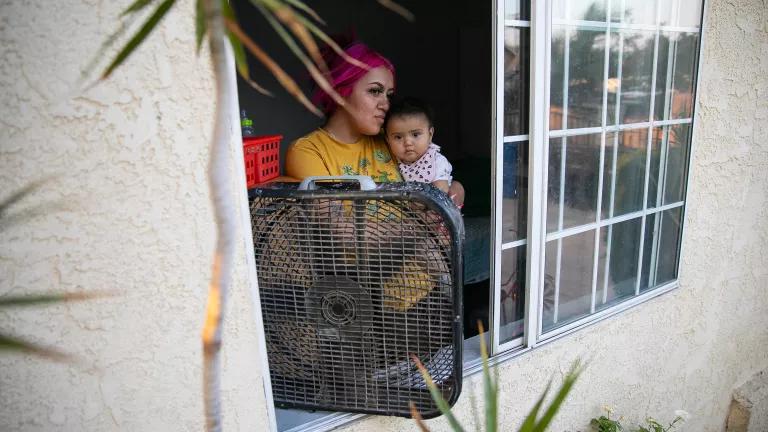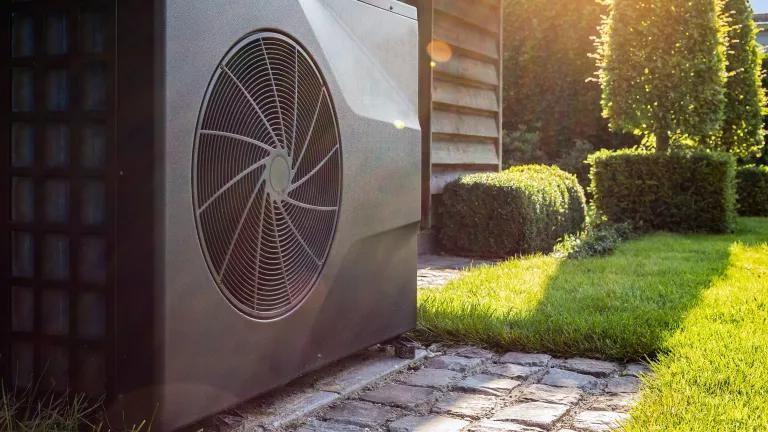CA Building Decarbonization: Progress Report & 2024 Priorities
California’s actions in 2023 can guide other jurisdictions looking to transition to healthy, clean, and efficient buildings. And what's next for 2024!

Chuck Schug/iStock
Decarbonizing our buildings is essential for achieving California’s climate and pollution reduction goals. Cutting emissions from buildings requires replacing gas-fueled appliances with clean, highly-efficient electric appliances powered by an increasingly renewable electric grid. Because gas heating appliances have a lifespan of about 15 years, we only have one or two shots per home to replace burnt-out gas appliances with clean electric ones before our state’s 2045 climate neutrality deadline.
California’s actions throughout the past year offer a guide to other jurisdictions looking to transition to healthy, clean, and efficient buildings. Up next for the decarbonization leader? Proving that California can strategically implement state and federal funding to pave the way for an equitable, all-electric future. Read on to understand California’s 2023 wins and the work that lies ahead.
California’s Pathway to 2030
California’s building decarbonization policies are geared towards a common goal: transitioning buildings to efficient, all-electric appliances. Zero-emissions appliance standards are the most effective way to electrify existing buildings at scale, as CARB plans to implement by 2030. But before standards can be adopted, the state must ensure that these products are available and affordable to all.
This is where California’s suite of policies comes in. Incentive programs, electric rate reform, building codes, and heat pump installation targets all aim to transform California’s appliance market to all-electric. These policies educate consumers about electric technologies, develop the workforce needed to deploy these technologies, and ensure that households save money on their bills when they make the switch. They also aim to reach low-income households, who are least able to afford the upfront costs of home electrification.
Progress This Year
Advancements in 2023 solidified California’s role as a leader in clean and healthy buildings, including:
- Investments in healthy homes: Aligned with the Governor’s commitment to 3 million climate-ready homes and 6 million heat pumps by 2030 and the Legislature’s commitment to $1.4 billion for clean, healthy and fossil fuel free buildings, the fiscal year 2023/2024state budget included:
- $432 million for home repairs and installing all-electric appliances in the residences of low-income Californians through the Equitable Building Decarbonization (EBD) program (totaling $494 million now secured for this program over two years, part of a commitment to $922 million for EBD over five years).
- $95 million for electric appliance incentives with provisions for affordable housing through the TECH Clean California program (totaling $145 million now secured over two years, in addition to the $120 million in initial funding provided by SB 1477).
- Notably absent was funding for decarbonizing critical community buildings through the Strategic Growth Council (SGC) program. NRDC is supporting allies seeking funding for this program in the proposed climate bond in 2024 or other sources.
- Zero-emissions appliance standards moving forward: Air quality officials in the Bay Area passed the nation's first zero-NOx appliance standards to end the sales of new gas water heaters and furnaces beginning 2027 and 2029. The Bay Area Air Quality Management District convened the Implementation Working Group (IWG) composed of 40 stakeholders with the goal to provide insights on the technical readiness of the market and equitable transition to compliant appliances. The California Air Resources Board (CARB) also kicked off its development of a new statewide rule to establish a zero-emission standard for new residential space and water heating appliances starting in 2030.
- Removing subsidies for new homes connected to gas: California eliminated gas line extension subsidies for developers to connect new properties to the gas system in July 2023, a move that will save ratepayers an estimated $160 million per year. In addition, the California Public Utilities Commission (CPUC) just approved a decision that would also remove the electric line extension subsidies for new buildings that are connected to the gas system. The decision recognizes that subsidies for new buildings that burn gas are out of step with California’s climate and public health objectives.
- Reducing energy efficiency incentives for gas appliances: The CPUC voted to remove energy efficiency incentives for gas appliances in new construction.
- California Electric Homes Program (CalEHP) launched, directing $75M to all-electric market rate construction.
- Guidelines developed for the innovative Equitable Building Decarbonization program: The California Energy Commission (CEC) released guidelines for a $690 million direct install program that will electrify homes and apartments at no-cost to low-income families. The program prioritizes engagement with community-based organizations, provides funding for necessary health and safety improvements, ensures manufactured housing is included, and requires renter protections. Administrators of this program will be selected in 2024. An additional $30 million was set aside for a separate Tribal direct install program.
- Ten of the world’s largest manufacturers, distributors and suppliers of building heating and cooling equipment committed to building decarbonization: They signed an agreement committing to actions aimed at achieving California’s goal to have six million electric heat pumps installed by 2030
- Proposed California regulations would encourage new air conditioning (AC) installs to be heat pumps, enabling customers to access heating and cooling in one clean appliance. The regs would require a contractor to either install a heat pump or include additional efficiency improvements with AC installation to make up for the lost efficiency savings a heat pump would have provided.
- The Homelessness Prevention Act was signed into law: SB 567 (Durazo) builds on existing law to better protect California’s low-income renters from unjust evictions and excessively high rent increases. It closes loopholes from abuse of no-fault just causes for eviction. More is needed to prevent low-income renters from housing instability, but SB 567 is an important step forward. Secure housing is a foundation for clean and healthy homes for all.
- The Stable Affordable Housing Act of 2023 signed into law: SB 555 (Wahab) requires California to examine how to marshal public, nonprofit, and cooperative housing production and acquisition to establish permanent affordability for the state’s disadvantaged communities.
- Expanded utility shutoff protections for Angelenos: Building off LADWP’s November 2022 decision to end utility shutoffs for low-income customers, RePower LA Coalition partners, Los Angeles Alliance for a New Economy (LAANE) and Strategic Concepts in Organizing and Policy Education (SCOPE), intervened to define when these shutoff protections would apply. LADWP’s board of commissioners voted in June to trigger the protections upon heat or freeze alerts from the National Weather Service. While this is a huge step forward, community partners and NRDC believe there is more work to do – energy affordability is a foundation for clean and healthy homes for all.
What’s Next – Top 5 Priorities for 2024
This was a big year for building electrification. The programs and policies already underway, and those that will kick off shortly, provide a foundation for the future—and give us hope that California and other states can achieve meaningful climate action in a way that uplifts and benefits communities across the country.
While California’s initial success should be celebrated, this is also no time to slow down. Here are our top 5 priorities for 2024:
- Make the most of federal and state funding. Implement, implement, implement. Effective implementation is needed to make the most of available federal and state funding. We must make progress on the ground over the next few years, and we have an initial surge of both state and federal funding to work with.
- Pick up the “cheap” wins - no more outdated one-way air conditioners! We need to get heat pumps into buildings as fast as possible, while spending limited public funds judiciously (funding must be focused on those who need it most). Ensuring that every new AC is actually a heat pump requires little or no additional cost in most cases, and should be a top priority for both education and regulation.
- Electric rates must remain affordable and competitive with polluting fossil fuels. Equitable rate reform is required to help fairly pay for system costs while also enabling electrification.
- Stop sinking money into the gas system, electrify neighborhoods instead. We need to start strategically electrifying whole neighborhoods, and avoiding expensive gas infrastructure that will be a liability going forward.
- Foundational policies to ensure secure and affordable housing should be everyone’s priority. Permanent affordable housing, tenant protections, and zero utility bill debt are key to successful building decarbonization.
Equitably decarbonizing all of California’s buildings—and achieving economy-wide decarbonization—will require an ongoing commitment from the state and all stakeholders. We look forward to another productive year in 2024!




